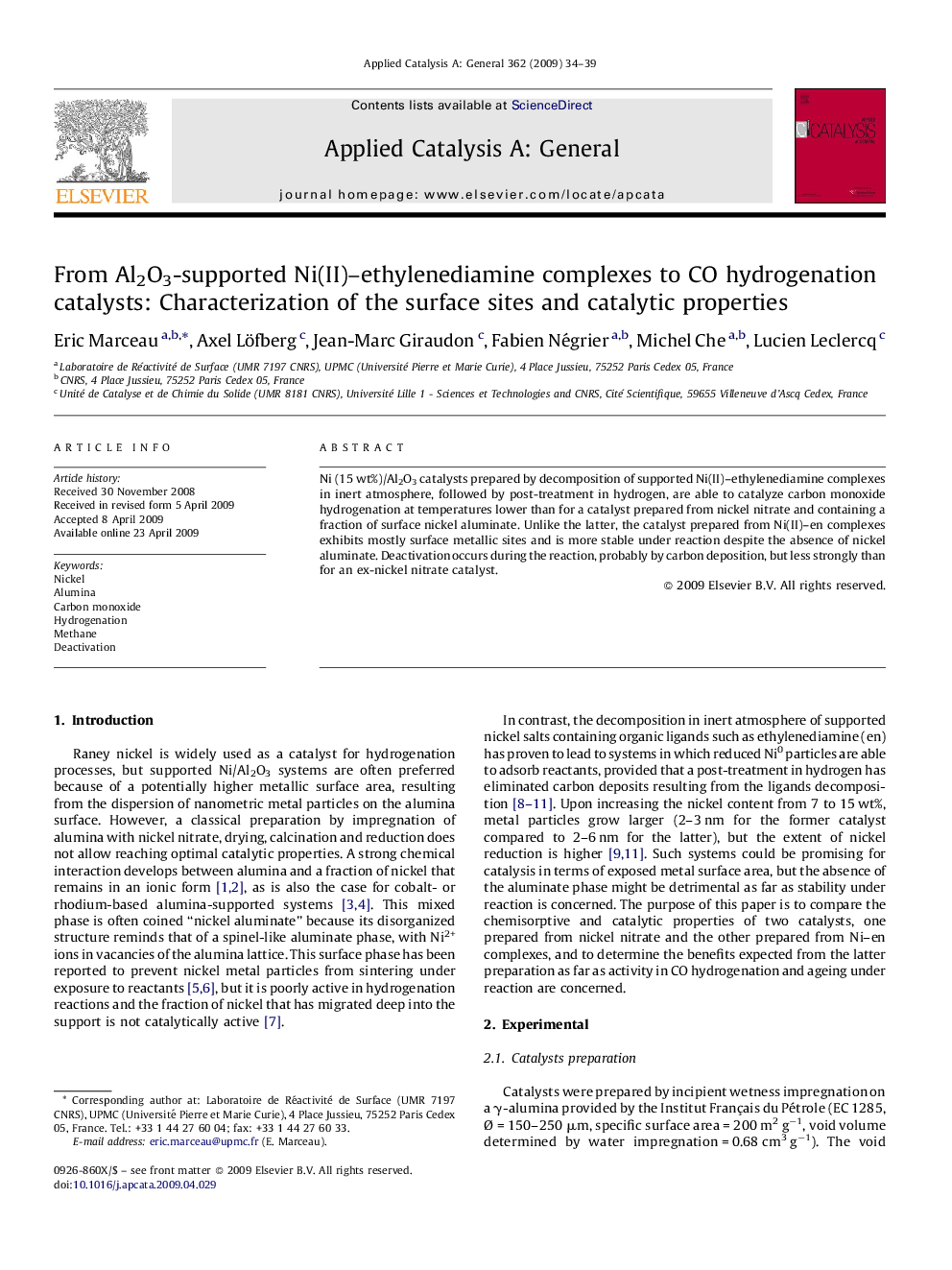| Article ID | Journal | Published Year | Pages | File Type |
|---|---|---|---|---|
| 42684 | Applied Catalysis A: General | 2009 | 6 Pages |
Ni (15 wt%)/Al2O3 catalysts prepared by decomposition of supported Ni(II)–ethylenediamine complexes in inert atmosphere, followed by post-treatment in hydrogen, are able to catalyze carbon monoxide hydrogenation at temperatures lower than for a catalyst prepared from nickel nitrate and containing a fraction of surface nickel aluminate. Unlike the latter, the catalyst prepared from Ni(II)–en complexes exhibits mostly surface metallic sites and is more stable under reaction despite the absence of nickel aluminate. Deactivation occurs during the reaction, probably by carbon deposition, but less strongly than for an ex-nickel nitrate catalyst.
Graphical abstractCompared with Ni/Al2O3 catalysts prepared from nickel nitrate, characterized by a low metallic surface area exposed and by reduced sites connected with nickel aluminate, catalysts prepared by decomposition of Ni–ethylenediamine complexes exhibit mostly reduced metal particles and a high metallic surface area (13 m2 gcat−1). As a result, they appear as highly active toward CO hydrogenation.Figure optionsDownload full-size imageDownload as PowerPoint slide
